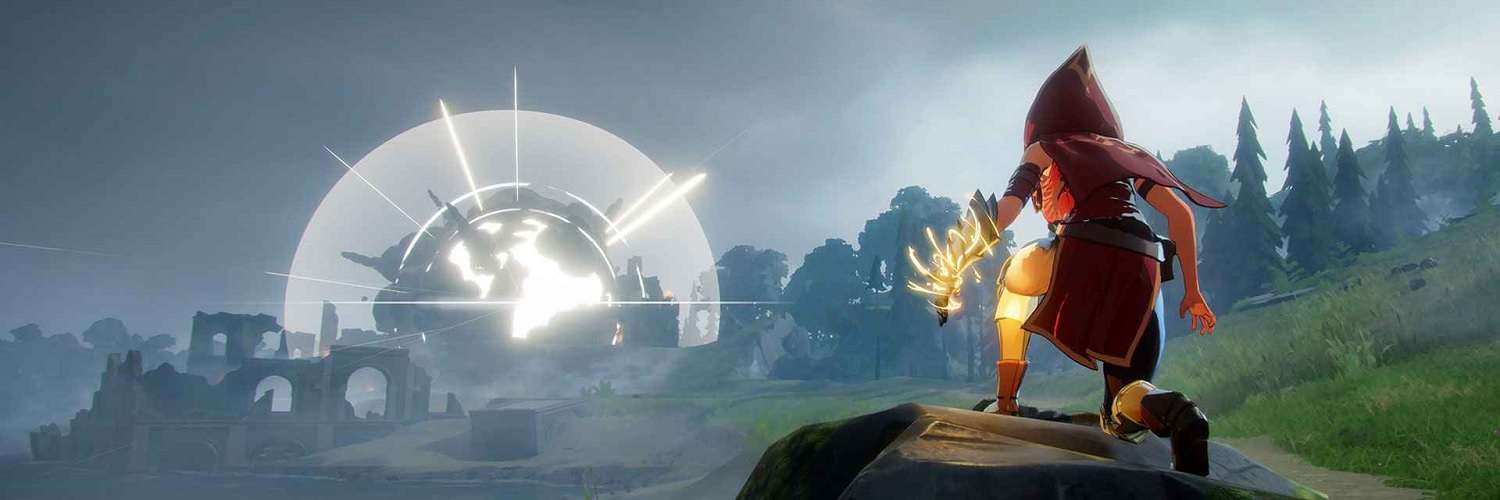
Spellbreak PC Review
The Toy Story meme featuring Buzz Lightyear showing Woody that “X, X Everywhere” is so applicable for elements of the video game industry. Over the last couple of years it is fair to say that “Battle Royale, Battle Royale Everywhere” is a perfect description of what has happened within the medium. The genre follows the same path that Multiplayer Online Battle Arena (MOBA) followed in its birth, since battle royale started as mod for games, such as Arma 2, then grew into the behemoths like PlayerUnknown’s Battlegrounds back in 2017, Fortnite Battle Royale and Apex Legends.
Even three years after the popularity of PlayerUnknown’s Battleground, companies are still trying to grab some of the cash cow that is battle royale, with Ubisoft (Hyper Scape), Activision (Call of Duty: Warzone) and EA (Battlefield 5) all bringing their take to the table. With so many battle royale games on the market, a developer has to shake things up and do something a little different to stand out, and that is where Proletariat, the developers of Spellbreak, are hoping to do with their wizard battle royale title.

Off the bat, the developers are doing things right with their approach to the game. In this day and age a company cannot release a battle royale game with a price tag if they want it to take off and gain a fan base. It is simply not viable with all the other free alternatives out there unless there is a big known brand tied to it to get people to fork out money. This is why it makes sense for Spellbreak to be free-to-play, and while there is questions as to way it is Epic Games Store exclusive on the PC platform, it does not cost anything to open an account and download the game on that digital store front. Spellbreak is also on PS4, Xbox One and Switch, and with full cross-platform play support there was no issue finding games, jumping into the action within a few seconds of searching. As of the publish date of this review, the game has over five million players across all platforms, which means that finding games will not be an issue for the foreseeable future.
Before a game even begins the differences are apparent for Spellbreak over other battle royale titles. This is because a player must select a class from one of six types – Frostborn, Conduit, Pyromancer, Toxicologist, Stoneshaper and Tempest – before jumping into either solo, duo and trio match finding. These classes are basically six elementals and determines what weapon the character starts with. Spellbreak does away with the typical weaponry of the genre. You will not be finding sniper rifles, assault rifles, shotguns or rocket launchers here. This game is about the power of magic, so the traditional real world weapons are replaced with the power of elements – Fire, Ice, Earth, Lightning, Wind and Toxic – that battlemages can use to attack their foes through their primary right gauntlet.
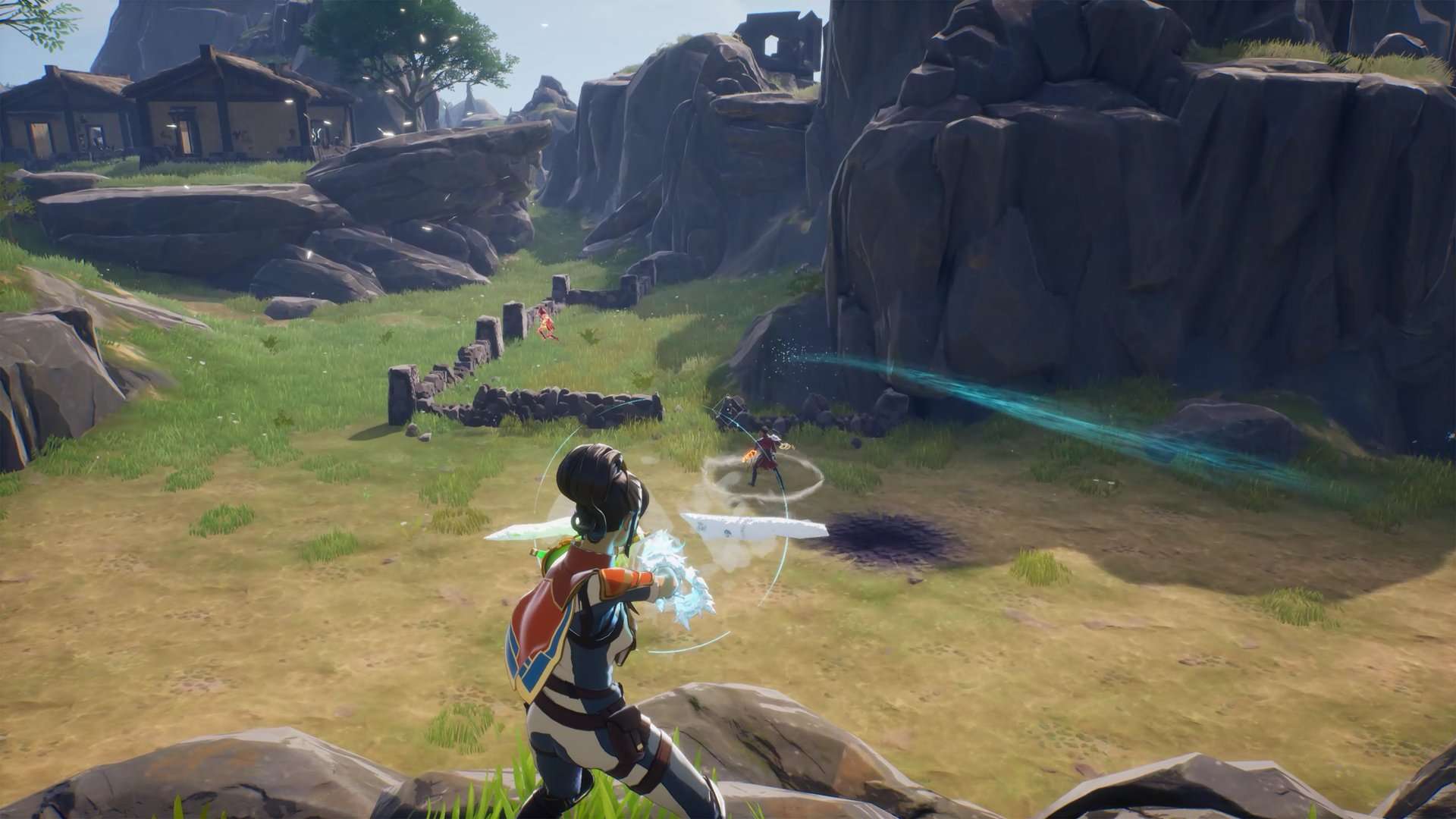
Every class has two forms of attack, one standard attack that slowly drains mana with each shot, and a special skill that is tied to a cooldown after use. Mana is also used to float after a jump to enable some airborne action. The skills are varied across the classes. Frostborn’s main attack, for example, is an ice shard shot that is basically the game’s take on a long range weapon. Conduit is using the dark side of the force to send out lightning strikes directly from their hands towards a foe for a limited distance, while Toxicologist throws out a spread shot of poison goo. Special skills are also very different across each class, which led to the Conduit becoming my favourite due to its ability to rain down an area of effect lightning strike that causes damage and shock to anyone hit. Pyromancers can create a huge wall of fire, Stoneshapers throw large boulders and Tempest creates a huge tornado that pulls players towards it.
Classes also come with four different skills that give more distinct play to them. Every class has their level one, the starter skill. To give an idea of the unique traits, Frostborn has the Ice Lance that enables a standard attack to leave an ice trail that can then be skated on to increase movement speed by 150%. As the Spellstorm – the wall of doom that shrinks the battle arena after a given time that is prevalent in all battle royale games – finishes shrinking and a player makes it to the safe zone they will level up and unlock the next skill, doing so on each Spellstorm shrink until skill level four is unlocked. In terms of the Frostborn, this unlocks an overcharge on the standard attack to deal 35% more spell damage. Classes bring something extra to the battle royale formula, and is a similar situation to how hero shooters behave, such as Overwatch, with abilities adding an extra dimension to the game’s battles. While purists might not like the concept of a class system and want something where every player is on equal ground, I personally found it an exciting dynamic to the combat, making fights more engaging because of the tools available through classes and skills.
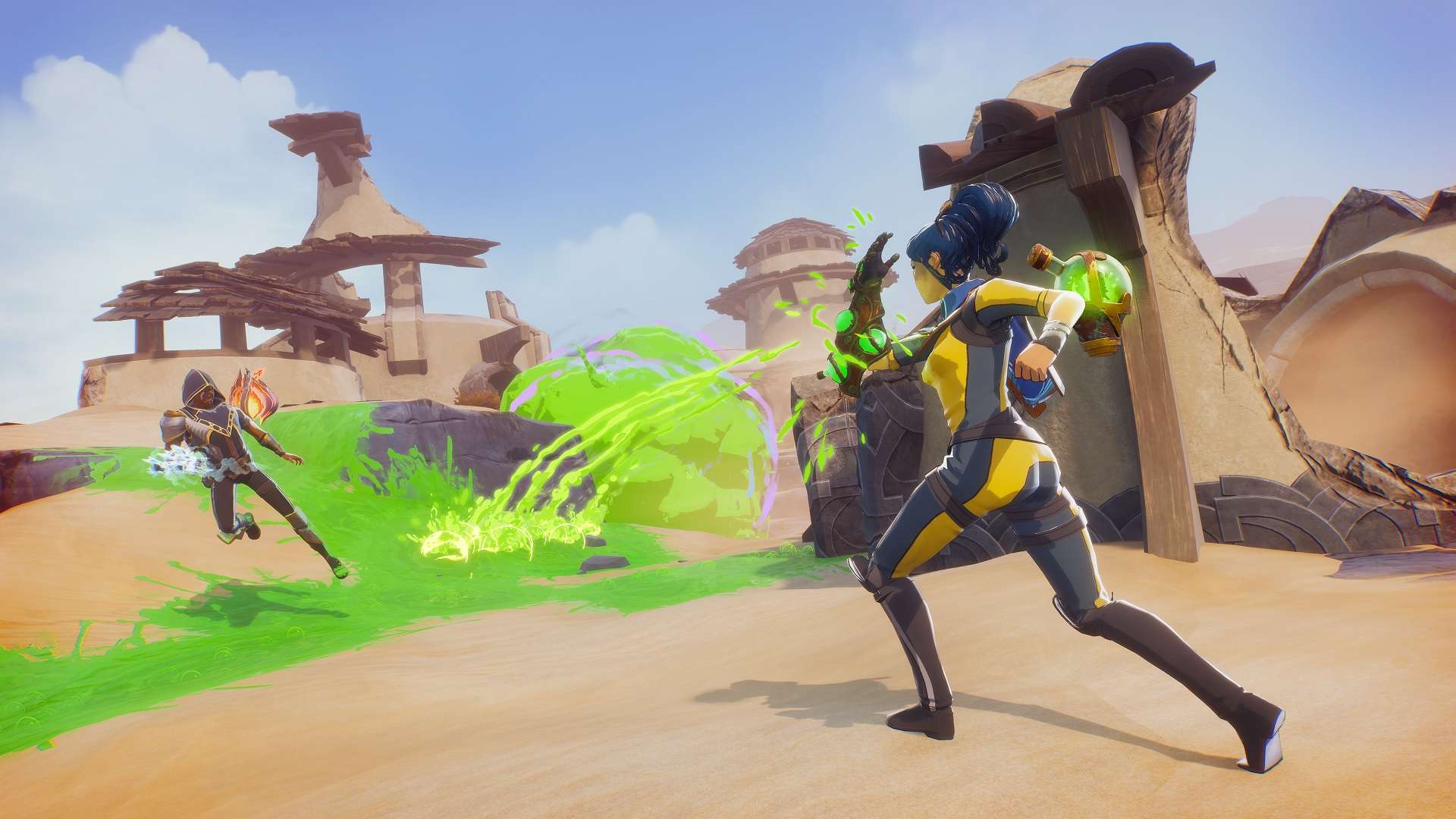
Things become even more interesting with combat when players find another element gauntlet on the battlefield to equip to the left hand. A character always has their main class element locked, but the left gauntlet can be swapped with whatever is found on the battlefield, essentially offering the chance of weapon swapping, but through elemental spells. The behaviour of the left gauntlet is the same as the right, so standard shots will use mana and there is also a special skill that will go into cooldown once used. Not only does this offer different ways to approach a fight, but special spells can be combined with the two elements to create entertaining results and it only takes a basic shot to mix with the special to perform this outcome. The whirlwind special from the wind element shot with electric will cause a giant electrified tornado, but if you shoot a basic wind shot into a lightning storm then it becomes a electrified wind shot with the benefits that electric has with stunning an enemy. Lightning shots can also electrify ice sheets that are left on the ground, in essence turning it into a ground trap. These element combinations can also help enemies too, such as turning the toxic gas cloud special by the Toxicologist into a worthless giant block of ice when shot by a standard ice shot, unless someone was in the gas cloud, then it becomes a frozen prison. Being able to maximise these spell combinations will help in battles, and it is an component of the game that adds some marvellous diversity to its combat.
Let us not forget that Spellbreak is a battle royale, so a lot of those traits are in this game. A match begins by picking a spawn location and falling out of the sky until landing on the ground in a “superhero landing” pose. From this point on it is about exploring the map and finding items to improve the chance of survival. Along with finding elemental gauntlets, other items that populate the world are runes that offer a power. These runes can enable short flight, invisibility, dashing, see enemies through walls, air launching and a few other abilities that are handy for either confusing enemies or escaping from them. There are also items to improve armour, mana and running speed, along with health and shield potions. All items have rarity values – common, uncommon, rare, epic and legendary – with the rarer stuff offering benefits over the tier under it. There is never a shortage of items to find, since locations are packed with stuff. There was never a moment where I died without having some semi decent gear attached to me. Enemies also drop all their items on death, allowing for a quick improvement if they happen to be carrying the good stuff.
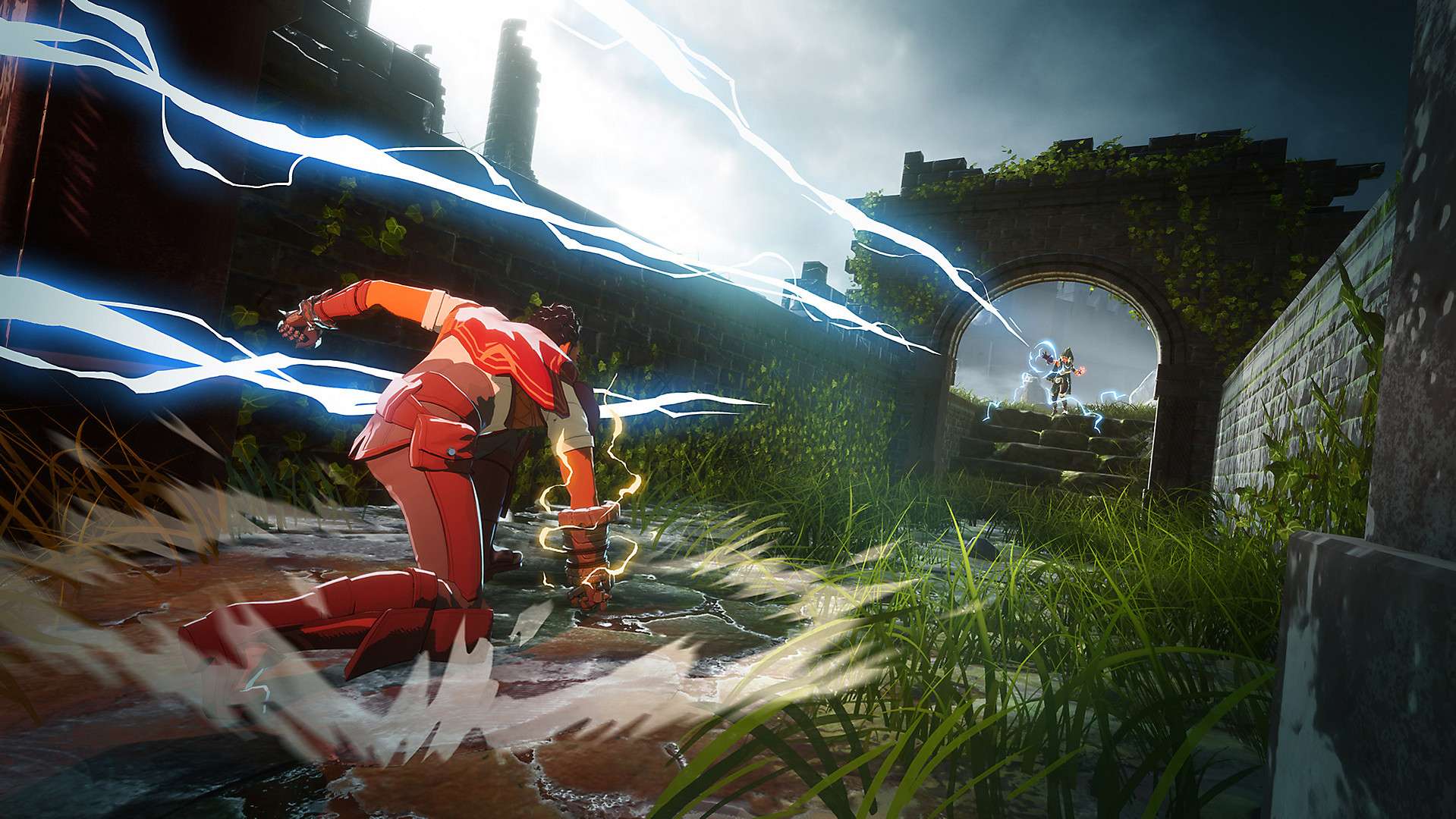
Hollow Lands is not a big map for its player count, with a maximum of 42 players per battle. It might be one of the lower size player counts for a battle royale match, but what it lacks in sheer numbers it makes up with the speed of the gameplay. Spellbreak reminds me of Heroes of the Storm, where that game was made to speed up the whole progression of MOBAs, cutting match lengths in half. This is a similar concept in Spellbreak, in which everything moves at a faster pace. Time between arena shrinks is short, pushing players together much faster, and since items are easy to find, it makes players unafraid to take part in a fight, which is the best part of Spellbreak. Combat is energetic, quick paced and agile with the characters ability to jump, float, attack from the air or move fast on the ground enabling the combat to be hectic and explosive. Best of all, if someone gets the jump on you from behind, then having a good escape rune makes it easier to avoid death than say something in PlayerUnknown’s Battleground, where in that game a death always seems to come from some sneaky sniper that takes you down in a quick hit or two.
There are issues with Hollow Land in terms of aesthetics – it’s simply a very boring map to explore. The region features desert area, some dark, moody dead of life area, green forest area and ruin castles and villages, but there is nothing that screams this place is set in a land of magic. A benefit of the boring design is that it does stop itself from cluttering the view, since as it stands it is easy to see other character models in the distance, so much so that I would sit on top of a destroyed castle wall and enjoy battlemages fighting it out in puffs of magical spells, then go diving in for the finishing touch with my buddy and steal all the loot – I’m a bastard like that, you see.
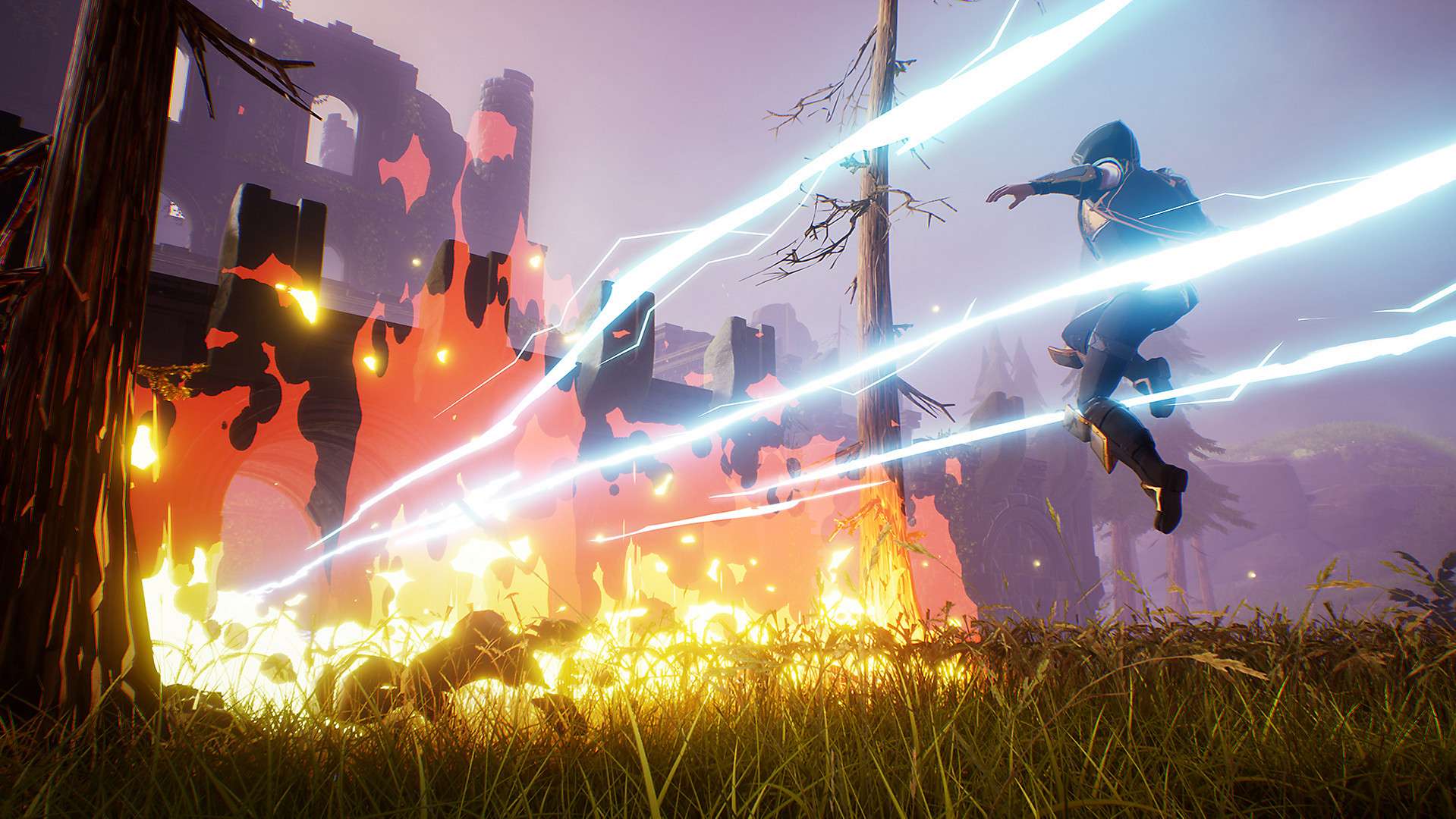
Spellbreak‘s visuals are not demanding to run, so anyone with a entry level gaming PC will be able to play with a decent performance. The cel-shaded art-style brings a nice presentation, even if the world is not using the art to the full potential. Player models have this sort of anime design due to the cel-shading, but nonetheless look quite nice – from the basic starter male and female models to some of the crazy skin unlocks that are purchased by in game coins or with real money. In terms of the game’s monetisation, it is all cosmetic, so no one can gain an advantage through using money. Still, there are elements of the game that reward people who have played more than a few hours, since some of the traits can offer an advantage over someone starting the game, such as an trait to resurrect. Thankfully, it does not take long to level up classes to unlock the traits, so if someone is enjoying the game they are bound to have these done after five or so hours.
The future is looking bright for Spellbreak with a roadmap from the developers explaining what to expect in the future. New modes are due to come in the next couple of months, with a 9 vs 9 team deathmatch revealed to be coming next. New talents, consumables and runes and even new classes are expected too, making it seem the developers have plans to keep Spellbreak fresh and active with its player base.
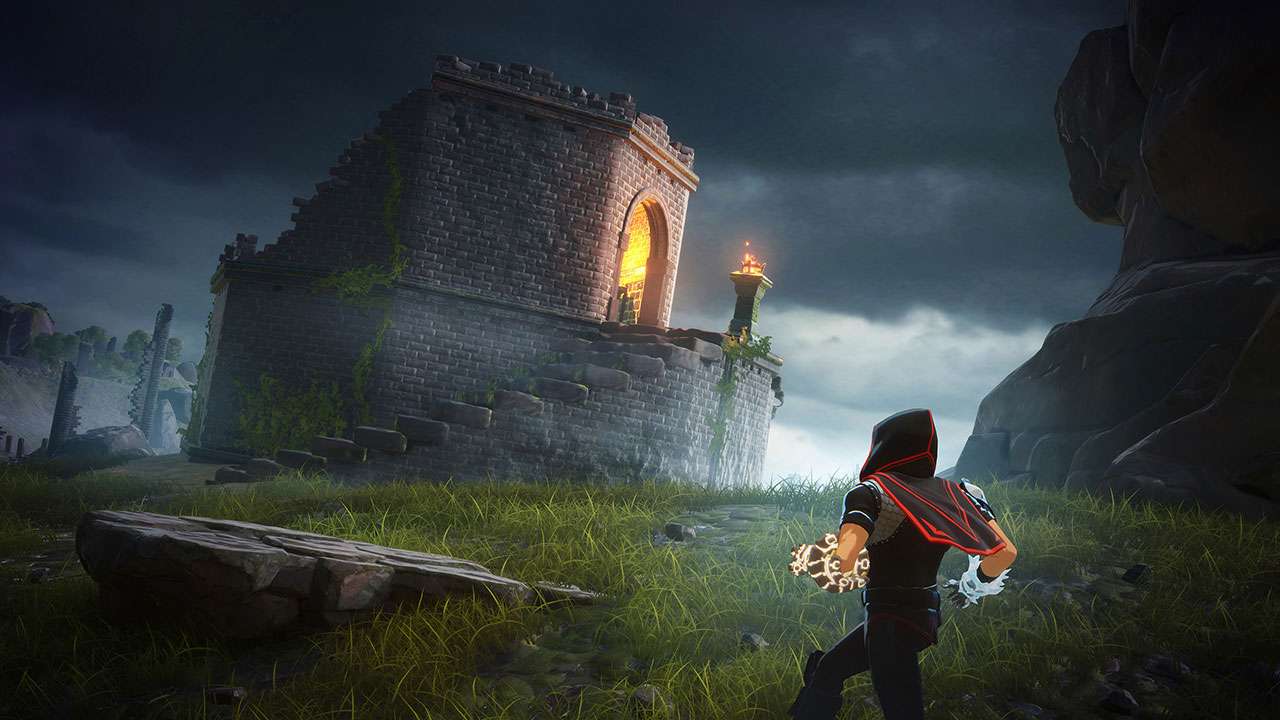
I absolutely had a blast with Spellbreak. This is a title in the overpopulated battle royale that deserves to find success and is gunning for your attention – it simply is ticking a lot of the right boxes for someone who might have issues with the slow nature of the genre. The chore of travelling long distances without finding gear, seeing action or getting surprised by a one-hit kill from a hidden player is never a problem here. Spellbreak is designed to make its players want to fight. Its frantic, fast combat, agile movement and spell combinations help it feel fresh, where fighting for battlemage supremacy is an absolute joy, helped more so by the genre’s lack of originality. The potential to grow into something superb is there, but even in its current state, Spellbreak is a great breath of fresh air for the genre. The game should find an audience with fans of battle royale or new people who are fed up with the gun-toting nature of them, or for those who are simply looking for something a little magical to dip their wands into.
